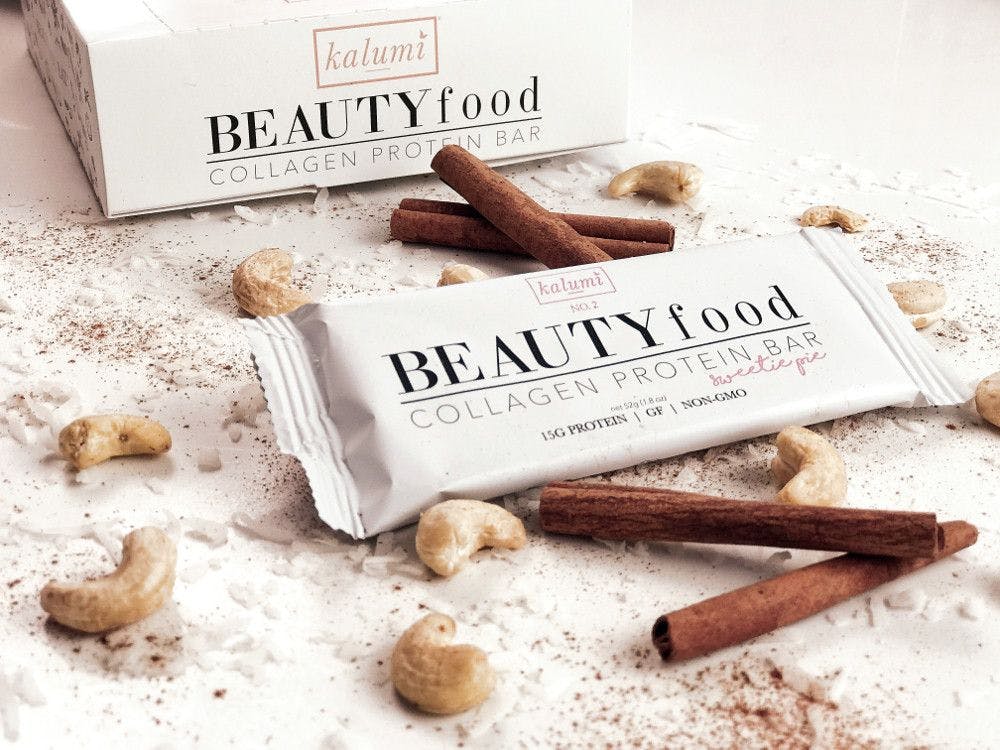Best Frenemies: Can the drug and dietary supplement industries get along?
Historically, when pharmaceutical and supplement brands pursue, promote, or sell products featuring the same, or similar, active ingredients, their relationship becomes antagonistic. But can things change?
Photo © iStockphoto.com/fotografstockholm. Edited by Quinn Williams.

At a fundamental level, you’d think that the dietary supplement and pharmaceutical industries would have plenty in common, given their shared raison d’être of making people well. Thus, you might also think that the stage would be set for the two fields to persist in peaceful, mutually beneficial coexistence.
But then you might be wrong. For historically, when pharmaceutical and supplement brands have pursued, promoted, or sold products featuring the same, or similar, actives, they’ve tended to find themselves in sometimes hostile positions over who ultimately reaps the commercial benefits of supporting wellness.
That tendency can shift at times, however, as diverse parties with a stake in some emerging ingredients are proving that a shared interest can serve both sides-and all consumers-well by furthering science and public health at the same time.
Evolving Dynamic
Back in 1994, Steve Mister, president & CEO, Council for Responsible Nutrition (CRN; Washington, DC), was working at the Nonprescription Drug Manufacturers Association-now the Consumer Healthcare Products Association-and “had a front-row seat to the passage of DSHEA,” he says.
Of course, DSHEA is the Dietary Supplement Health and Education Act, which overhauled how FDA defines and regulates dietary supplements, and in the 25 years since its enactment, “The relationship between the pharmaceutical and dietary supplement industries has transformed dramatically,” Mister contends. And for the good.
But prior and leading up to the act’s passage, Mister recalls an antagonistic dynamic that led each side to view the other suspiciously. “The supplement companies felt that ‘Big Pharma’ was trying to redefine the field and provide a ‘pill for every ill,’” he says. “On the other hand, the pharma companies looked at the supplement companies as snake-oil sellers peddling potions in bottles. So there was a great deal of tension between the two.”
A quarter century later, the very fact that many of those pharmaceutical and supplement firms have merged to create massive organizations serving both patients and consumers is a sign of just how much that dynamic has flipped. Pharmaceutical firms “see that there’s a market for supplements, there’s consumer interest in them-and the science around them has gotten so much better,” Mister says.
Omega Issues
Yet tensions remain, and they reached a flashpoint in November 2018, when Amarin Pharma Inc. (Dublin, Ireland), maker of the high-concentration EPA-only omega-3 drug Vascepa, filed false advertising lawsuits against omega-3 dietary supplement manufacturers Coromega Health Inc. (Vista, CA) and Omax Health Inc. (Bakersfield, CA), claiming that the companies used results of Amarin’s new REDUCE-IT clinical trial to market their products despite Amarin’s contention that Vascepa’s composition, dose, and regulatory status differ materially from those of the supplements.
Even before this action, Amarin had filed an earlier complaint with the International Trade Commission alleging that synthetically produced omega-3s comprising primarily EPA should not be considered dietary supplements.
So what’s Amarin’s endgame? Mister calls the company’s moves “a prime example of a pharmaceutical firm trying to shut down a dietary supplement application of a particular ingredient.” Yet he believes it by no means sets the standard for how the two sectors should proceed.
Neither does Harry Rice, PhD, vice president of regulatory and scientific affairs, GOED (Global Organization for EPA and DHA Omega-3s; Salt Lake City). “In the case of EPA and DHA,” he says, “the fact that there’s such a strong body of scientific evidence supporting the benefits has obviously led to interest from both supplement and pharmaceutical companies in developing omega-3 products.” But that shared interest need not descend into turf war.
As recently as 2004, when FDA approved the highly purified and concentrated omega-3 polyunsaturated fatty acid drug Lovaza as the first prescription omega-3 product, “supplements and pharmaceuticals were coexisting peacefully in the omega-3 space,” Rice points out.
And Mister adds, “Lovaza is doing just fine”-no legal action required. “So I don’t think we can characterize what’s going on with Amarin as an industry-wide approach,” he continues. “Amarin is one company that’s trying to gain a monopoly over an ingredient. But you’ve got another company”-Lovaza’s GlaxoSmithKline-“that’s perfectly fine with a supplement in the market, as well.”
The R&D Pot of Gold
Then again, if a pharmaceutical firm wants to guard the pot of gold it sees at the end of its R&D rainbow, you almost can’t blame them. Joseph Dowling, CEO and CFO, CV Sciences (San Diego, CA), certainly sees their side of the story.
Perhaps that’s because CV Sciences operates both a drug-development division focused on using synthetic cannabidiol (CBD) in new therapeutics and a consumer-products division that makes and markets plant-based over-the-counter CBD products. “So we understand the regulatory framework on both the CPG side and the drug-development side,” Dowling says.
They also understand that “the amount of work you have to do to get to where you can produce commercial quantities of a drug and get FDA approval for a specific indication-just submitting the science on the active compound, whether it’s preclinical or clinical work, then all the manufacturing that goes into it, all the controls around that-is a massive undertaking. And it takes a lot of money.” The upshot: “If you’re trying to commercialize something, you want to have a monopoly, if possible,” he says.
But, Dowling continues, “The question is, ‘Is anyone entitled to that?’” And when it comes to CBD, “We think strongly that the answer is no. It’s been around for thousands of years.”
Investigational Pushback
Within the past year, Epidiolex (GW Pharmaceuticals; Salisbury, England) became the first FDA-approved drug made from CBD. As a treatment for patients with Dravet syndrome, a severe form of epilepsy, the drug represents a milestone for cannabis science; yet at the same time, FDA’s imprimatur could render dietary supplements containing CBD illegal. And it all has to do with FDA’s Investigational New Drug (IND) process.
That process, the language of which resides primarily in 21 CFR 312 (the Code of Federal Regulations), spells out the path that pharmaceutical companies must follow in getting FDA’s permission to start human clinical trials and ship an experimental drug ingredient across state lines, and it comes into play with Epidiolex-and whenever any pharmaceutical and supplement firms are pursuing the same ingredient-because it specifies that if a potential drug ingredient had been under investigation for use as a drug ingredient before appearing on the market as a supplement, precedence then goes to the drug application and the parties studying it, and supplement makers cannot legally use the ingredient.
By contrast, if a supplement was in legal commerce before being studied for pharmaceutical use, then the supplement can stay on the market regardless of whether any drugs are developed-and if they are, they’ll have to coexist with the supplements. As Lovaza does with old-fashioned fish oil.
Epidiolex Fallout
The statute was written to protect the interest of the companies-usually pharmaceutical ones-that spend millions of dollars on clinical investigations. Thus, FDA has indicated-“sort-of floated” the idea, in Dowling’s words-that it might make an IND preclusion argument for Epidiolex and CBD. And that would spell trouble for the burgeoning CBD supplement space.
But fortunately for that space, “GW Pharmaceuticals has not made an IND preclusion argument itself,” Dowling continues. “GW has never come out and claimed a monopoly on this plant or any of its compounds. I think they have a patent portfolio that they’re going to prosecute and that leaves a lot more research and product development-whether for drugs or consumer products-available for many others, including us, to pursue.”
And that’s not necessarily a bad thing for GW Pharmaceuticals, either, as it behooves the company to see a robust CBD market-even for supplements-bloom, given that more buy-in and acceptance of CBD means more buy-in for Epidiolex. And the difference between this and the more litigious environment surrounding omega-3s “may lie,” Rice surmises, “at least in part, in the relative maturity of the industries. While the omega-3 industry is still young, it pales in comparison to the infancy of the CBD industry.”
Wild West for Now
Indeed, Dowling and others compare the consumer side of the CBD marketplace to “a Wild West,” he says. “You have companies like us that are taking it very seriously and following FDA’s rules and regulations, both on safety and on marketing. But if you were to look at the brands out there, probably more are breaking them than following them. So we’re going to be in this Wild West for a while, and at some point FDA will step in more heavily. And I think the market will hopefully speak to this, as well, by rewarding players like us who follow the rules.”
Meanwhile: regulators gonna regulate. It is their job, and it’s “the very tough job of protecting public health,” says Mister. “So better to err on the side of protection than on the side of free market access.” (And when’s the last time you heard a trade-group representative say that?)
Besides, even with increased regulations, Dowling believes that the copacetic climate surrounding CBD can last. “It looks to me like FDA wants to have an opening not just for dialogue and public comment, but to build a path forward for responsible participants to develop products and science over time.” FDA recognizes that CBD will capture a huge audience, and if the agency can avert some of the challenges it’s faced from other ingredients and the claims made for them, it’ll save itself, the industry, and consumers a lot of trouble.

Prinova acquires Aplinova to further increase its footprint in Latin America
April 7th 2025Prinova has recently announced the acquisition of Brazilian ingredients distributor Aplinova, which is a provider of specialty ingredients for a range of market segments that include food, beverage, supplements, and personal care.






















